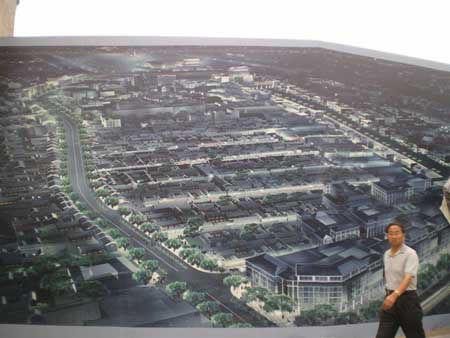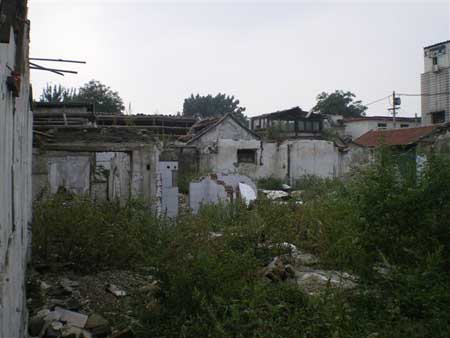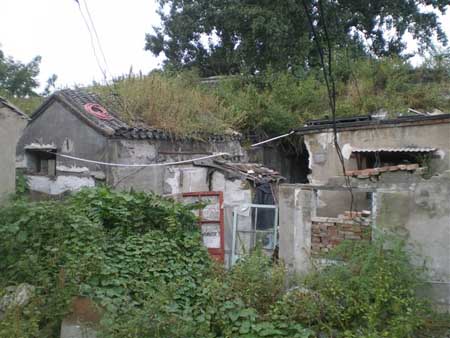Heritage protection
|

|
|
A billboard showing the planned renovation of the Hutong area to the west of Qianmen Street. Qianmen Street itself is on the right of the picture.
|
COHRE themselves acknowledge that:
"At the national level and within Beijing, there is an enormous effort to preserve and reconstruct culturally significant architecture, relics, and even entire historic neighbourhoods…" iv
Nevertheless, their introduction to Section 3 of their report tells us:
"Many Beijing residents have been saddened by the loss of Qianmen… It has now been replaced by an artificial, sanitized copy… Of the thousands of small businesses that once had shops in the area, there will now be only some 180 shops on Qianmen Street…" v
Qianmen Street dates back nearly 600 years. The City decided to renovate it in the style of the 1920s and 1930s, based on contemporary photographs. Clearly they were wrong. The western media are full of people who could have done a better job.
COHRE's introduction to this section of the report appears to have been lifted straight from two sources, a blog vi and an article in "The Australian" vii, without any attempt to validate their claims. The suggestion that thousands of small businesses will be replaced by only 180 posh shops on Qianmen Street is rubbish. Qianmen Street is part of a much larger Hutong area, all of which is being restored. In the small streets on each side of Qianmen Street there will be hundreds of other small businesses, shops and restaurants. Many of these are already in place – I have shopped and eaten there.
|

|
|
This area lies less than a minute's walk from Qianmen Street, which the authorities are accused of having "ruined". It has clearly been derelict for years.
|
|

|
|
As can be seen from the electrical wires, these two dwellings in Qianmen are inhabited. According to COHRE: "None of the communities studied would, as a whole, meet the UN-Habitat operational definition of a 'slum'…" viii
|
Some parts of the area are currently derelict and clearly have been for years. Others are filled with overcrowded Hutong with no facilities or sanitation – effectively slums. One of COHRE's sources, Rowan Callick, writes of a family of three living in an apartment of 8 m2. ix
You cannot have people living at that level of density. You are therefore faced with two realistic alternatives. One is to rehouse everybody locally by razing the Hutong altogether and replacing them with modern low-rise apartment blocks. The other is to rebuild the Hutong in accordance with a reasonable population density, which means that there will be no room for around half of the previous population.
The Beijing authorities have gone with the latter solution – restoring the Hutong, and moving out a large part of the population. But there is no "right" answer. It doesn't matter what you do, some people will lose out on the deal, and others will not get what they wanted. And any solution that is not self-financing means that one group of people is being subsidized at the expense of another. Thus we come to the question of economics.